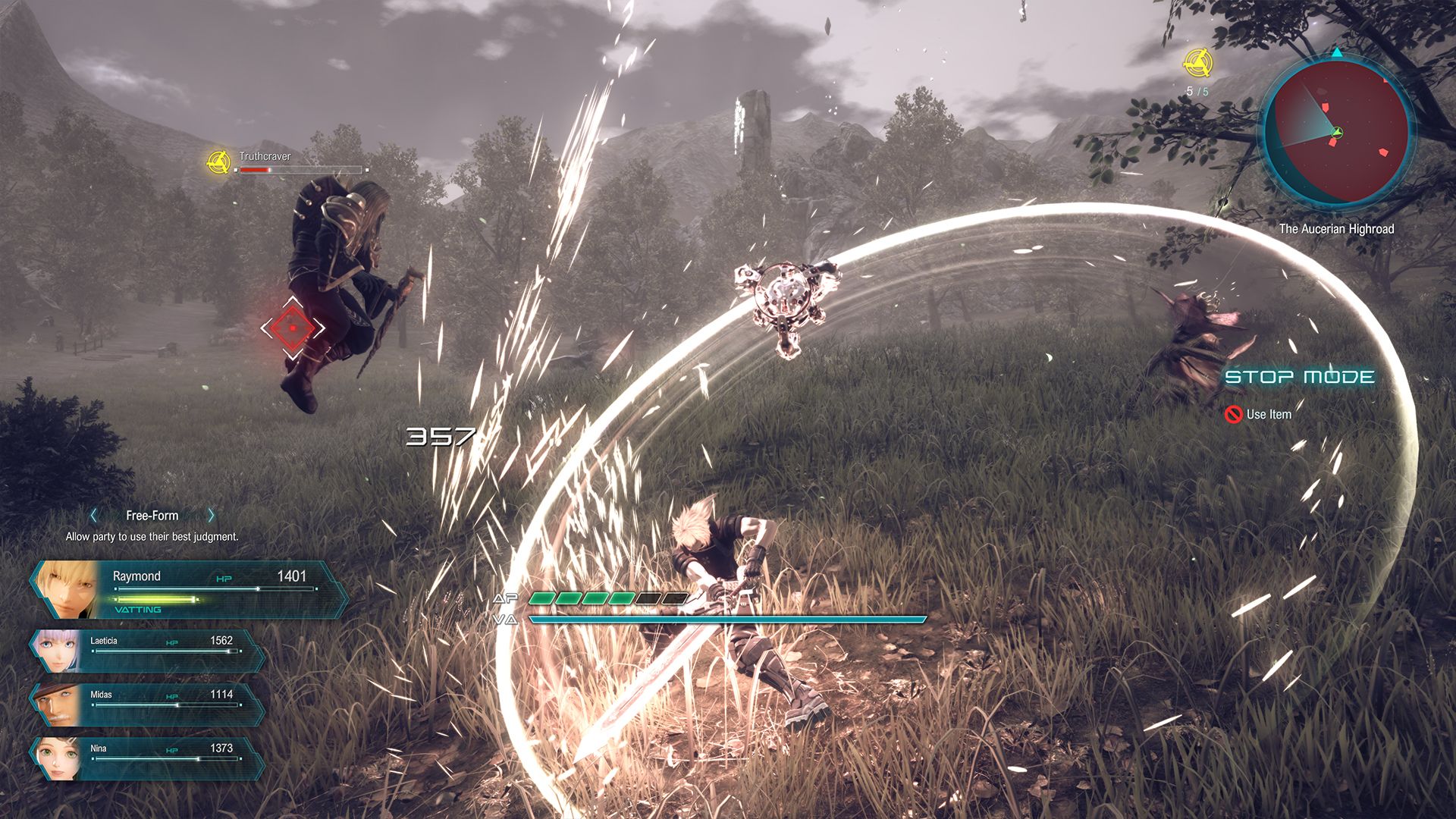I haven’t been very kind to Star Ocean: The Divine Force in recent months. It seems to be a visually incoherent mess, features painfully generic characters, and isn't interested in fixing the series’ fractured reputation. As someone who grew up loving these space-faring anime adventures, for decades now I’ve been crossing my fingers that Tri-Ace will strike lightning once again and deliver a JRPG worth caring for. To my surprise, that time may be upon us.
Don’t get me wrong, it is little more than passable, but compared to The Last Hope and Integrity and Faithlessness, that is far more than I expected. After playing a couple of different sections at a recent preview event, there is an added sense of dynamic modernism to The Divine Force that manages to free it from mediocrity. While it still has so much left to prove before I can consider myself invested, this is way better than I could have expected.
Star Ocean has always felt archaic in the modern era, with the series’ refusing to adopt updated conventions from across the genre even as Final Fantasy and Persona broke so much new ground. It has long been left behind, considered old-school in its approach to melodramatic storytelling and epic real-time battles. It still is that game, but a few changes help make it so much more enjoyable to play. Battles are no longer instanced affairs, forcing you to load into a bespoke arena with its own cadence each time you stumble into a scrap.
Now it all unfolds right away, with your entire party transitioning into combat with a welcome smoothness that makes exploration and grinding that much more satisfying. I only had the better part of 30 minutes with the game, but that alone was enough to convince me that Tri-Ace has taken fan complaints into account and tried to create something better. I can switch between characters immediately, allowing me to play around with different skills and abilities or find a style of movement that works best for me. I opted for the heavily armoured princess, who despite her tough exterior can move with fluid grace across each new battlefield.
Combat is still way too simple, though. From what I can tell, there is only a single attack button and a handful of combos for each character, and all movements are dictated by an AP gauge that charges over time. This is meant to add a level of rhythm to proceedings, but for impatient gamers like me, it just meant I’d constantly be hopping around the place waiting to recharge before jumping back into the fray. This has been the series’ staple for years and for some reason, the developer hasn’t had the desire to change or add extra depth to make combat more interesting. With a varied party like this, you’d expect something more.
DUMA is where Tri-Ace is banking on most of its innovation being delivered this time around. This futuristic device is found by our protagonist after he arrives on this strange new planet, and serves as both a source of knowledge and a novel way to navigate the environment. He basically gives you the ability to fly. A press of the shoulder button will cover the character in a flourishing blue light, allowing us to then point in a direction and thrust ourselves forward.
In battle, it is used to perform blindside attacks, or to zip around enemies and deal extra damage without them even noticing your presence. It’s great fun, and provides enough reason to experiment with different characters and make use of the larger spaces now afforded to combat. It’s also a bit gimmicky, and only serves to highlight how lacking combat really is when you’re constantly zipping around in search of a quick distraction.
This new robotic companion comes into his own across the open world. The Divine Force has some massive areas to explore, all of which are filled with monsters, treasure, and other secrets to uncover that you are constantly encouraged to seek out. The presence of DUMA means walking and running is for losers, and all the cool kids opt instead to zip about the place and clamber up cliffs like you’re a glitching horse in Skyrim. It’s so much fun, and you will even find random items to discover similar to the agility orbs in games like Crackdown.
Traversal is a core part of the game’s identity, and all the environments I saw are built to accommodate that approach. This may also result in the game being very easy to break as more experienced players get to grips with it, since even I found myself unnaturally blasting towards enemies or flying through otherwise humble villages like some sort of weeaboo superman. But it’s fun and totally not boring, which is precisely what Star Ocean needs.
Aside from the changes to movement and battles, this is the JRPG all of us are expecting. The cast of characters is generic and unremarkable, while the story of a lovable anime boy stranded in a new environment as he’s forced to make friends and reunite with former allies is tried-and-true ground drenched in predictability. Quests, dialogue, and similar conventions are all present and accounted for, and none of them surprised me. But if they’re competent, when combined with all of these cool new ideas, it might be just enough to keep my attention.
Source: Read Full Article


.png)